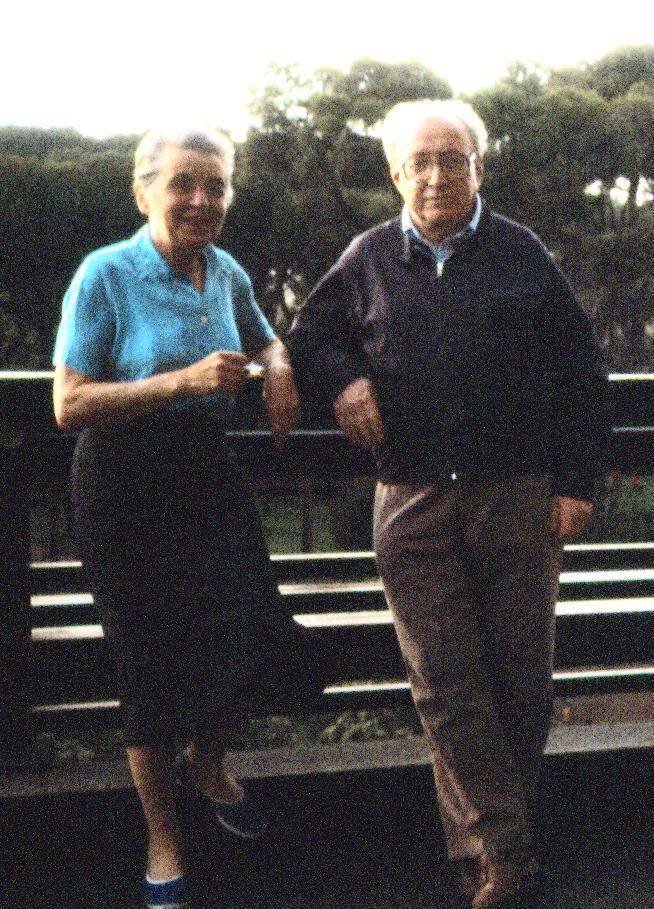Awards Noether Lecture Role Mathematician | Name Olga Ladyzhenskaya Alma mater Moscow University | |
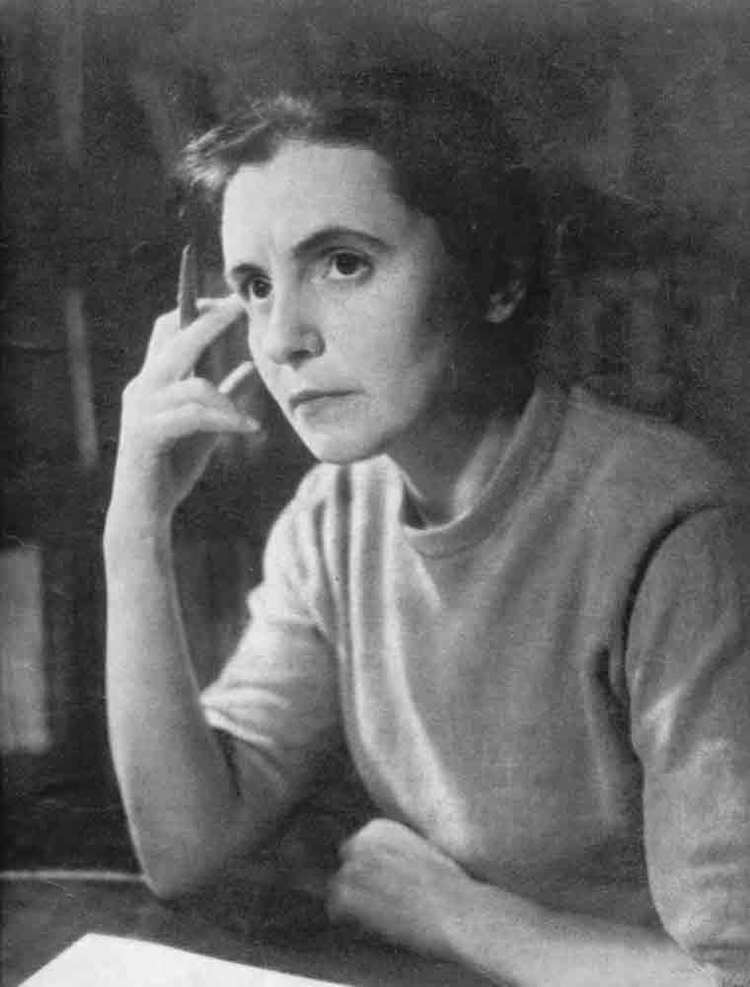 | ||
Parents Anna Mikhailovna, Aleksandr Ivanovich Ladyzhenski Similar People Sergei Sobolev, Ludvig Faddeev, Ivan Petrovsky, Vladimir Arnold, Andrey Kolmogorov | ||
Olga Ladyzhenskaya: Four things you need to know about the Russian mathematician
Olga Aleksandrovna Ladyzhenskaya (Russian: Óльга Алекса́ндровна Лады́женская; [ˈolʲɡə ɐlʲɪˈksandrəvnə ɫɐˈdɨʐɨnskəɪ̯ə]) (7 March 1922 – 12 January 2004) was a Soviet and Russian mathematician. She was known for her work on Partial differential equations (especially Hilbert's 19th problem) and Fluid dynamics. She provided the first rigorous proofs of the convergence of a finite difference method for the Navier–Stokes equations. She was a student of Ivan Petrovsky. She was awarded the Lomonosov Gold Medal in 2002.
Contents
- Olga Ladyzhenskaya Four things you need to know about the Russian mathematician
- Who is Olga Ladyzhenskaya
- Olga Ladyzhenskayas Biography
- Her Mother Anna Mikhailovna
- Her Father Alexsandr Ladyzhenskaya
- Her Teacher Ivan Georgievich Petrovsky
- Her Doctoral Advisor Sergei Sobolev
- Her Student Ludwig Fadeev
- Her Student Nina Uraltseva
- Olga Ladyzhenskayas Work on Mathematical Equations
- Publications
- Cause of death
- References
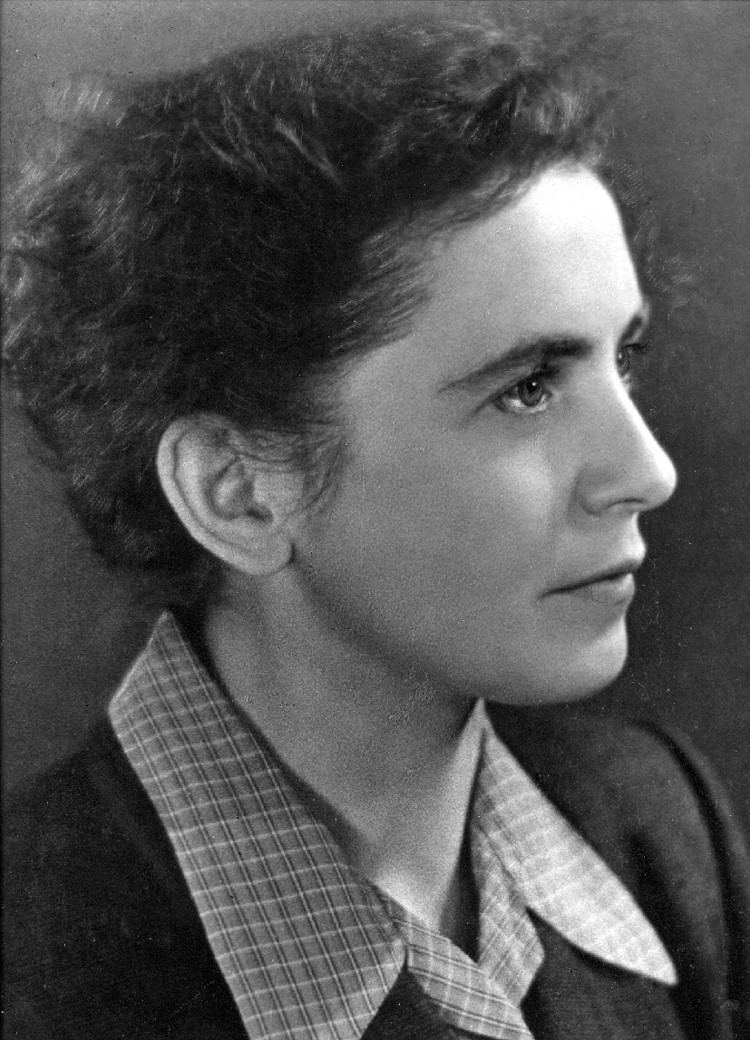
Who is Olga Ladyzhenskaya
Olga Ladyzhenskaya's Biography
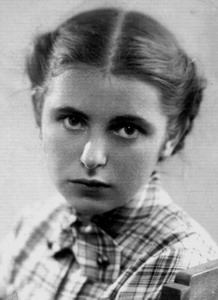
Regarded as one of the most influential thinkers of her generation and a great contributor to the field of science Olga Ladyzhenskaya was an eminent Mathematician. Olga had overcome several personal adversities, broke many barriers and immensely contributed to the field of mathematics as we know it today. Born on the 7th of March, 1922 in Kologriv RSFSR, she was the daughter of Anna Mikhailovna and Alexsandr Ivanovich Ladyhenskaya.
At an early age, her love for Mathematics was already noticeable. Her brilliance and aptitude towards this field of science proved that little Olga was going to pursue mathematics as an academic discipline. Many observers believe that she was highly influenced by her father Alexsandr who was a mathematics teacher. Olga’s family at that time was quite famous for producing academicians and artists. One of the eminent artists of that time was Olga's grandfather’s brother, Gennady Ladyzhenskii.
It was the time when she was preparing to complete her high school education, tragedy struck the family of Olga Ladyzhenskaya. In 1937, her father was arrested by the Russian NKVD for treason and labeled as an enemy of people of the state. He was sentenced and executed for crime against the state during the upheavals that characterized Russian society at the time. Three years after the death of Marshall Joseph Stalin in 1953, Alexsandr was exonerated of any crime.
Despite the trauma suffered due to her father’s death, Olga was still able to complete high school in 1939. However, she was not allowed to attend Leningrad State University due to her deceased father’s status. Instead, she attended another pedagogical institution and taught at a Kologriv school. This was the time of great unrest due to World War II and the German invasion of Eastern Europe. Five years after applying and being denied an opportunity for a University education, she finally got an admission into Moscow State University in 1943. She graduated 4 years later in 1947. Then in 1951, she was finally able to attend Leningrad State University where she got her Ph.D. while studying under the tutelage of Vladimir Smirnov and Sergei Sobolev. After completing her doctorate, she started lecturing at the Department of Physics for the institution and bagged a second doctorate in 1953. Noted for her brilliance in mathematics, Olga joined Skeletov institute’s physics laboratory and became the head of the institute in 1961.
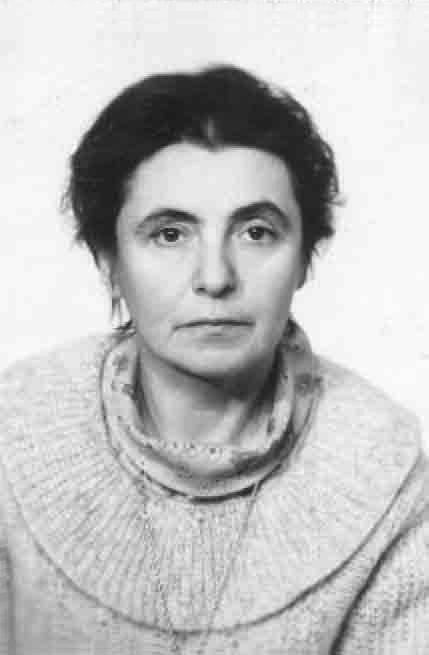
During the course of her life, Olga made so many contributions to the field of mathematics. Her work on fluid dynamics and partial differential equations are the most notable ones. An author of over 200 scientific studies, she was awarded the prestigious Lomonosov Gold Medal in 2002 amongst other notable awards to commemorate her outstanding commitment to the field of sciences as well as her struggle and sacrifices.
Olga Ladyzhenskaya had unflinching love for arts and literature. She was friends with the poet Anna Akhmatova and writer Aleksandr Solzhenitsyn. As a city council member, she was part of several philanthropic ventures targeted towards the tormented people under the Soviet regime. During the later years of her life, Olga Ladyzhenskaya was suffering from several eye problems. On the 12th of January 2004, Olga Ladyzhenskaya passed away in her sleep at the age of 81. It was heard that Olga had planned a trip to Florida during that time.
Her Mother Anna Mikhailovna
Anna Mikhailovna married Alexsandr Ladyzhenskaya and they had three daughters. Originally from Estonia, Anna settled in Kologriv with her husband and gave birth to her children in the small town. The exact date of their marriage is not known but from all indications, she probably lived there due to her husband’s occupation as a school principal and a Mathematics teacher. Life in Russia under the autocratic rule of Marshall Stalin was very harsh for peasants and nobility alike.
After the death of her husband, Anna Mikhailovna had to assume the sole responsibility of caring for her children and this was not an easy thing to do for two major reasons. Firstly, life for the average Russian at the time was very deplorable with the Russian economy struggling before and during World War II to cater to the needs of its population. Secondly, the Ladyzhenskaya family were marked as enemies of the state and even after the execution of her husband, her family was still ostracized and denied several basic rights and privileges. Under these conditions, Anna Mikhailovna and her daughters had to sell clothes, soap, and shoes to earn a meager living.
Two of her daughters were not allowed to complete high school except Olga, and even then, Olga was not allowed to attend Leningrad State University because she was labeled as a “Daughter of the enemy of the nation”. After Stalin’s death, life for the intellectuals gradually improved, and Olga was able to pursue her academic interests unhindered.
Her Father Alexsandr Ladyzhenskaya
Alexsandr Ladyzhenskaya was a Russian nobleman and a mathematics teacher who was also a high school principal before his arrest and subsequent execution. Born into a Russian middle-class family, he was one of the few members of Russian society to be literate at the time. Alexsandr's grand uncle Gennady Ladyzhenskii was also a famous Russian painter known for his Renaissance artworks.Alexsandr had three daughters, Olga being the youngest. During his lifetime, he had a very strong bond with his youngest child, whom he inspired to pursue a career in Mathematics eventually.
Besides his teaching practice, Alexsandr was a social critic and political advocate, and this often placed him on a collision with the authorities. Despite several warnings from the government and pleas from the family and friends, he was persistent on his ideologies. He always insisted that he owes a responsibility towards his daughters and students to speak up against the social ills caused by the Russian state.
He used to teach his daughters the subject of mathematics by first explaining the basic notions of mathematical geometry, and from there, he formulated theorems which his daughters had to prove. Out of the three, Olga proved to be the brightest student and she would discuss mathematics and calculus with her father for hours. Alexsandr refused to pay heed to the warnings to stop his social advocacy in and out of the classroom. This subsequently led to him being arrested and executed by the NKVD. According to unofficial records, it is believed that he died in a torture chamber between the 23rd and 30th of October 1937. The exact date of his death is not known because the NKVD (a forerunner of the KGB) did not keep or release the official records of teachers and academicians arrested or killed at the time. Many years later, all the teachers who were killed during the Stalinist era were exonerated of any crime against the Russian state.
Her Teacher Ivan Georgievich Petrovsky
Olga had a few notable teachers and one of them was Ivan Petrovsky, a Soviet mathematician who majored in the field of partial differential equations. Born in Sevsk on 18 January 1901, Ivan Petrovsky inspired several Russian mathematicians during his time and was credited for providing the solution to Hilbert’s 16th and 19th problems. He is also credited for discovering what many regards today as Petrovsky lacunas in differential equations. In his later years, he contributed several theories on probability, boundary value problems and the topography of algebraic surfaces and curves.
Regarded as a master mathematician and one of the brightest brains of his time, he was also a mentor to other younger students such as Olga Ladyzhenskaya, Olga Oleniki, Yevgeniy Landis and Sergei Godunov. Under his guidance, Olga Ladyzhenskaya wrote a thesis that was shortlisted for the Fields Medal Award in 1958, though finally the award was won by Rene Thom and Klaus Roth.
Petrovsky was a distinguished member of Russia’s academic elite group. He taught mathematics at the Steklov Institute of Mathematics which Olga went on to attend. In 1969, Olga won the USSR State Prize; the same year Petrovsky was awarded the Hero of Socialist Labor. Before his death on 15 January 1973, he was the President of his Alma mater, Moscow State University (1951-1973). He also remained the head of International Congress of Mathematicians, Moscow chapter, in 1966.
Her Doctoral Advisor Sergei Sobolev
Sergei Sobolev was another Mathematician who influenced Olga Ladyzhenskaya’s work. Sergei was born in St Petersburg on 6th October 1908, to Lev Alexandrovich and Natalya Sobolev. Sergei studied Mathematics and graduated from Leningrad State University in 1929. After studying under Professor Nikolai Gunter, the young Sergei worked with Vladimir Smirnov after his graduation, and it was Smirnov who had the most profound influence on him. In 1934, he took up a position at the Steklov Mathematical Institute where most of Russia’s leading scientists worked at the time. Later on, he headed the institute after it was evacuated to Kazan during World War II.
Sobolev is regarded as one of the early pioneers of partial differential equations and functional analysis, so it is not surprising to find Olga Ladyzhenskaya among his mentees. Generally known for his invention of Sobolev Space and his work on generalized functions, he supervised Olga’s doctoral thesis in 1951 which eventually led to the Ph.D. she was awarded in the same year.
Sobolev introduced several notions that are now fundamental concepts in Mathematics, among them is the Sobolev Space which he used to define growth conditions for Fourier functions. His generalized functions which he introduced in 1935 were notable for resolving weak functions and so was his expansion of the application techniques of Leibniz and Newton. For a time, he was a Professor of Mathematics at Moscow State University (Olga Ladyzhenskaya Alma mater) from the year 1943 to 1957. Sobolev also participated in the USSR A-Bomb project as a deputy director of Russia’s Institute for Atomic Energy (1943-1957). He died in Moscow on January 3, 1989, at the age of 80.
Her Student Ludwig Fadeev
The initiator of the Fadeev equation is another notable student of Olga Ladyzhenskaya. Born on March 23, 1934, Ludwig Dmitrievich Fadeev was a Russian mathematician and Theoretical physicist. Fadeev led the Leningrad school in developing a quantum inverse scattering method for analyzing quantum integrable systems in a single dimension. His research was responsible for the subsequent invention of quantum groups by Jimbo and Drinfeld. Most notably, he is credited for his invention of Fadeev equations for quantum mechanics three-body problems, and the successful development of path integral models in quantizing non-abelian gauge theories.
Born in Leningrad into a family of Mathematicians, Ludwig Faddeev's father (Dmitri Faddeev) was an accomplished algebraic professor at Leningrad State University and was a member of Russian Academy of Science. His mother, Vera Faddeev was also well known for her published works on numerical linear algebra. Under Olga’s supervision, he completed his doctoral thesis on scattering theory in 1959.
Some of his notable achievements include The Dannie Heineman Prize (1975), Dirac Prize (1990), Max Planck Medal (1996), Pomeranchuk (2002), Demidov Prize (2002), Poincare Prize (2006), Shaw Prize (2008) and the prestigious Lomonosov Gold Medal (2013). Ludwig Dmitrievich Fadeev died on 26 February 2017 at the age of 82.
Her Student Nina Uraltseva
Olga mentored several students who went on to be leading Mathematicians in their own right. One of her students was Nina Uraltseva. Nina earned a Ph.D. in 1960 from Saint Petersburg State University under the supervision of Olga and completed her D.Sc in the year 1964. In what would become a fruitful partnership between both women, they both worked extensively on partial differential equations and produced several works on the subject. Nina majored in non-linear partial differential equations, for which she researched Hilbert’s 19th and 20th problem. Her dissertation earned her the Chebyshev Prize of the USSR Academy of Science in 1967 and the USSR State Prize in 1969. She was head of Saint Petersburg State University's mathematical physics department, and also the editor of Proceedings of St Petersburg Mathematical Society. Nina is regarded as one of the first women like Olga Ladyzhenskaya to break Russian society’s gender ceiling.
Olga Ladyzhenskaya's Work on Mathematical Equations
Mathematics as we know it today would have been different had it not being for Olga’s immense contribution to the field. During her lifetime she produced several works of repute that served as a foundation for other mathematicians to build upon. Two of her most popular works are fluid dynamics and partial differential equations. On partial differential equations, she espoused Hilbert’s nineteenth problem and improved it. She is also noted for her evidential proof of the Navier – Stokes equations (Convergence of a finite difference method).
Furthermore, she is credited for analyzing parabolic equations regularity, and quasilinear elliptic equation regularity in conjunction with her student, Nina Uraltseva and Vsevolod A. Solonnikov. She had over 200 notable work credited to her name which includes six monographs. Olga won several awards during her lifetime. Some of them include the USSR State Prize (1969), Member of the Lincei National Academy in Rome (1989), Kovalevskaya Prize (1992), ICM Emmy Noether Lecture (1994), John Von Neumann Lecture (1998), Order of Friendship (1992) and the Lomonosov Gold Medal (2002).
On the 97th anniversary of her birth, Google released a Doodle commemorating her life and achievement on 7, March 2019.
Publications

